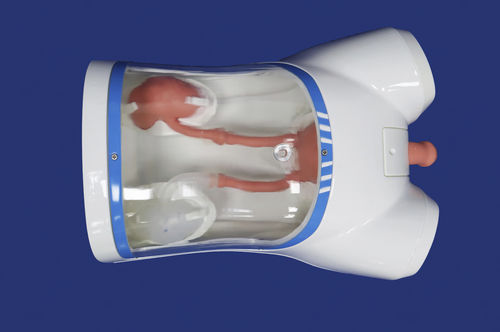
#Industry News
Urinary System Stones
Ureteroscopy Simulator
Introduction:
Urinary system stones, also known as urolithiasis or urinary tract stones, are solid formations that develop within the urinary system. These stones can cause significant discomfort and may lead to complications if not promptly diagnosed and treated. In this article, we will explore the causes, symptoms, diagnosis, and treatment options for urinary system stones.
Causes:
Urinary system stones can form when certain substances in the urine, such as calcium, oxalate, uric acid, or cystine, become highly concentrated and crystallize. Various factors contribute to stone formation, including inadequate fluid intake, certain dietary habits (such as excessive consumption of salt, protein, or oxalate-rich foods), family history, urinary tract infections, metabolic disorders, and underlying medical conditions that affect urine composition. Additionally, anatomical abnormalities or obstructions in the urinary system can promote stone development.
Symptoms:
The symptoms of urinary system stones can vary depending on the size, location, and movement of the stones within the urinary tract. Common signs and symptoms include severe pain in the back or side (referred to as renal colic), which can radiate to the lower abdomen and groin, blood in the urine (hematuria), frequent urination, urgency, cloudy or foul-smelling urine, and discomfort during urination. In some cases, individuals may experience nausea, vomiting, and fever if a urinary tract infection accompanies the stone.
Treatment:
The treatment approach for urinary system stones depends on several factors, including the stone's size, location, composition, and the presence of symptoms or complications. Small stones that are likely to pass spontaneously may be managed with pain relief medications, increased fluid intake to promote stone passage, and close monitoring. However, larger stones or those causing persistent symptoms may require intervention.
Treatment options include:
1.Extracorporeal Shock Wave Lithotripsy (ESWL): This non-invasive procedure uses high-energy shock waves to break the stones into smaller fragments, making them easier to pass through the urinary tract.
2.Ureteroscopy: A thin tube equipped with a camera is inserted through the urethra and bladder to reach the stone. The stone can then be fragmented or removed using specialized tools.
3.Percutaneous Nephrolithotomy (PCNL): This minimally invasive procedure involves creating a small incision in the back to access and remove larger stones from the kidney or upper urinary tract.
4.Surgical Intervention: In certain cases, open surgery may be necessary to remove large or complex stones that cannot be treated using less invasive methods.
Prevention:
To reduce the risk of recurrent urinary system stones, it is essential to adopt preventive measures. These include increasing fluid intake to maintain adequate urine volume, following a balanced diet low in salt and oxalate, moderating protein consumption, and avoiding excessive intake of foods high in oxalate (such as spinach, rhubarb, and chocolate). Depending on the stone's composition and underlying causes, medication or dietary modifications may be recommended to prevent stone recurrence.





